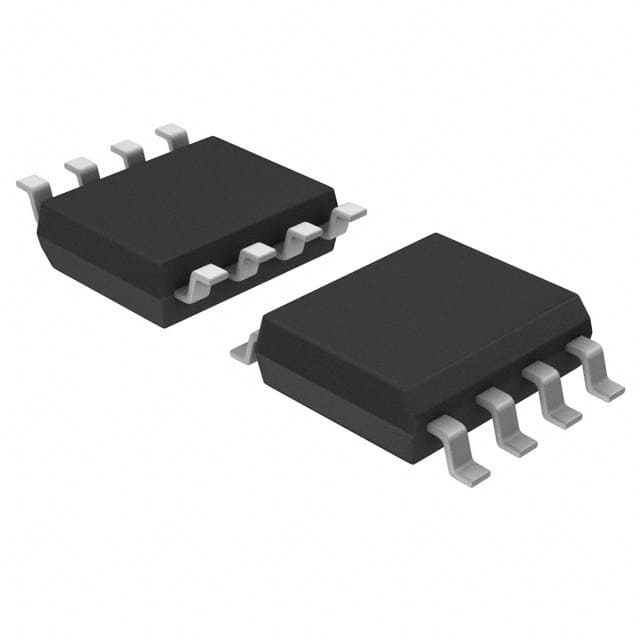NB3N2302DG
Basic Information Overview
- Category: Integrated Circuit (IC)
- Use: Clock Generator and Buffer
- Characteristics:
- Low power consumption
- High frequency accuracy
- Small package size
- Package: DG (Dual Gate) package
- Essence: Clock generation and buffering
- Packaging/Quantity: Available in tape and reel packaging, quantity varies depending on supplier
Specifications and Parameters
- Input Voltage Range: 1.8V to 3.3V
- Output Frequency Range: 1MHz to 200MHz
- Operating Temperature Range: -40°C to +85°C
- Supply Current: 10mA (typical)
- Output Type: LVCMOS
Detailed and Complete Pin Configuration
The NB3N2302DG IC has a total of 8 pins. The pin configuration is as follows:
Pin 1: VDD
Pin 2: GND
Pin 3: OUT0
Pin 4: OUT1
Pin 5: OE#
Pin 6: SEL0
Pin 7: SEL1
Pin 8: SEL2
Functional Characteristics
- Clock Generation: The NB3N2302DG generates clock signals with high frequency accuracy.
- Buffering: It provides buffering capability for the generated clock signals.
- Output Enable Control: The OE# pin allows for enabling or disabling the output signals.
- Frequency Selection: The SEL0, SEL1, and SEL2 pins provide frequency selection options.
Advantages and Disadvantages
Advantages: - Low power consumption makes it suitable for battery-powered devices. - High frequency accuracy ensures precise timing requirements. - Small package size saves board space in compact designs.
Disadvantages: - Limited output frequency range may not meet certain application needs. - Requires external frequency selection control.
Applicable Range of Products
The NB3N2302DG is commonly used in various electronic devices that require clock generation and buffering. It finds applications in: - Consumer electronics - Communication systems - Industrial automation - Automotive electronics
Working Principles
The NB3N2302DG utilizes an internal oscillator to generate clock signals. The frequency selection pins allow for choosing the desired output frequency. The buffered clock signals can then be used by other components in the system.
Detailed Application Field Plans
The NB3N2302DG can be applied in the following fields: 1. Mobile devices: Providing accurate clock signals for processors and communication modules. 2. Networking equipment: Generating synchronized clock signals for data transmission. 3. Automotive systems: Timing control for various subsystems, such as infotainment and safety systems. 4. Industrial control: Clock synchronization for precise timing in automation processes. 5. Test and measurement instruments: Generating stable clock signals for accurate measurements.
Detailed Alternative Models
Some alternative models to the NB3N2302DG include: - CDCE913: Clock generator and buffer with wider frequency range. - Si5338: Programmable clock generator with multiple outputs. - LTC6957: Low phase noise clock distribution IC.
5 Common Technical Questions and Answers
Q: What is the maximum output frequency of the NB3N2302DG? A: The maximum output frequency is 200MHz.
Q: Can I power the NB3N2302DG with a 5V supply? A: No, the recommended input voltage range is 1.8V to 3.3V.
Q: How do I enable/disable the output signals? A: Use the OE# pin to control the output enable/disable function.
Q: Can I use the NB3N2302DG in automotive temperature conditions? A: Yes, it is designed to operate in the temperature range of -40°C to +85°C.
Q: Is the NB3N2302DG available in different package options? A: No, it is only available in the DG (Dual Gate) package.
This encyclopedia entry provides an overview of the NB3N2302DG, including its basic information, specifications, pin configuration, functional characteristics, advantages and disadvantages, applicable range of products, working principles, detailed application field plans, alternative models, and common technical questions and answers.


